Best used mirrorless cameras: save money on second-hand kit
Bag a bargain and save money by buying one of the best preowned mirrorless cameras at a great discount compared to new.

There's no getting away from the fact that an outlay on a new camera is a financial burden. There are, however, plenty of options, including investigating the used market. In this article, we'll be looking at some of the best mirrorless cameras on the market.
- B&H Photo Video used stock deals (US)
- Adorama used stock deals (US)
- MPB used stock deals (UK)
- Wex Photo Video used stock deals (UK)
Price is often one of the first considerations when looking for a new camera. The excellent used camera market can find you some fantastic savings across a range of products. Most are thoroughly cleaned, tested, and evaluated before returning to the market.
When looking at used devices, there are a few things to bear in mind. Firstly, we'd always suggest buying from a reputable retailer or source, as you can be sure they've tested the unit and often replaced older parts if required. Secondly, they are always honest about the camera's condition too, so you know what you're getting.
Many used mirrorless cameras on the market are amongst the first of their generation - users have shifted to more modern setups. Still, if you're looking at the advanced to professional categories, there are some excellent deals on what are relatively recently released devices.
When twinned with the right lenses, the cameras featured below are powerful, highly recommended devices that will still have many years left in them.
Best for lens choice
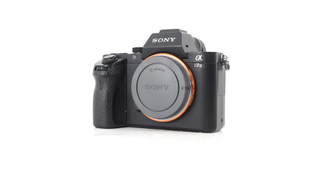
Sony A7R II
Our expert review:
Specifications
Reasons to buy
Reasons to avoid
- Preowned A7R II from Adorama (US)
- Preowned A7R II from B&H (US)
- Preowned A7R II from MPB (UK)
- Preowned A7R II from Wex (UK)
The Sony A7 somewhat shook up the market when it was released, and there are now some excellent deals to be found on the A7R II, which Sony released at the same time as the aforementioned model.
Small, light, rugged and convenient, the camera still holds up today with some impressive specs, although it's of course been superseded by much newer models. It's still, however, one of the most affordable ways to get full frame action on a budget. Furthermore, the amount of E mount lenses to choose from has increased massively since its introduction in 2014 so you will be spoilt for choice.
Best for optical quality
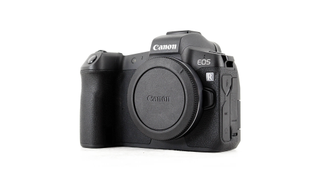
Canon EOS R
Our expert review:
Specifications
Reasons to buy
Reasons to avoid
The original Canon R holds a fairly impressive place in camera history, and that is being Canon's first full-frame mirrorless camera. It uses the same sensor as the 5D Mark IV, but buying used will save you about half the amount. For people in the used market at the moment, it still comes highly recommended, and although it's still a significant financial outlay, the number of lenses you'll have on offer is pretty much unparalleled in the market, so you can be sure to find many, at good prices, to suit your requirements.
Best for familiarity
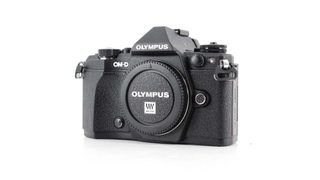
- Preowned Olympus OM-D E-M5 Mark II from MPB (UK)
- Preowned Olympus OM-D-E-M5 from B&H (US)
- Preowned Olympus OM-D-E-M5 from Adorama (US)
Olympus OM-D E-M5 Mark II
Our expert review:
Specifications
Reasons to buy
Reasons to avoid
Design and function are the key selling points of this Olympus model. Not only does it look good, it's a pleasure to operate, with a DSLR feel and classic manual modes for a fraction of the cost of a new up to date model. Expect to pay less that $500 for a used one in excellent condition, which in our minds is a bit of a steal.
Micro four-thirds photography might not be everyone's cup of tea, but if you're looking for a casual setup for vacations and everyday use, this comes highly recommended.
Best for speed
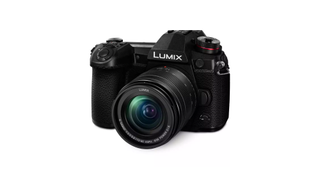
- Used Panasonic Lumix G9 from Adorama (US)
- Used Panasonic Lumix G9 from B&H (US)
- Used Panasonic Lumix G9 from Wex (UK)
Panasonic Lumix G9
Our expert review:
Specifications
Reasons to buy
Reasons to avoid
The Venus processing engine of the Panasonic Lumix G9 impressed when this camera came out, and today it's no different. Still boasting one of the fastest autofocus speeds in the business, with a 20fps shooting mode and a 5-axis stabilization system, this is an excellent camera unit that would suit wildlife, sports, and action photographers. For astrophotography, it's also a great bet, as the stabilization system works wonders in low-light environments.
Best for full-frame photography
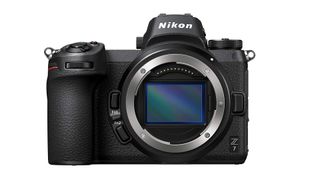
Nikon Z7
Our expert review:
Specifications
Reasons to buy
Reasons to avoid
Matching Canon's EOS R offering, this was Nikon's first foray into the world of mirrorless full-frame, professional-grade cameras, and if you're after an update from a crop-sensor unit, we'd recommend a look at the Z7. The Z7 II has now come out, which means there are some tempting deals to be had on the original model, and it's a great all-round, functional device that would suit a huge range of amateur to professional photography and filmmaking.
Best for comfort

- Preowned Fujifilm X-S10 at MPB (US)
- Preowned Fujifilm X-S10 at B&H (US)
- Preowned Fujifilm X-S10 at Wex (UK)
Fujifilm X-S10
Our expert review:
Specifications
Reasons to buy
Reasons to avoid
The Fujifilm X-S10 is a charming camera to use and operate. Although its diminutive in size and a very lightweight offering, its great hand grip and simple-to-use dials mean the ergonomics can suit most people. Excellent image stabilization, overall handling and image quality mean that it is a great used option and perfect for someone who wants to move up towards more professional setups and away from compact or bridge units.
Why buy used cameras?
Why you can trust Space.com
Many photographers prefer to buy new gear to ensure they get the longest life out of their equipment, but buying used gear can also be a great option. Used doesn't mean faulty. When buying additional camera bodies and lenses, it gives photographers and videographers greater flexibility.
When you buy from a reputable dealer, you will also be protected with product assessments and warranties in case something does go wrong.
Alternatively, if you like the look of one of the cameras recommended in this round-up but you'd prefer to buy new products, check out the latest Mirrorless camera deals below to ensure you're getting the best price.\
How we test the best used mirrorless cameras
In order to guarantee you’re getting honest, up-to-date recommendations on the best cameras to buy here at Space.com we make sure to put every camera through a rigorous review to fully test each product. Each camera is reviewed based on a multitude of aspects, from its construction and design, to how well it functions as an optical instrument and its performance in the field.
Each camera is carefully tested by either our expert staff or knowledgeable freelance contributors who know their subject areas in depth. This ensures fair reviewing is backed by personal, hands-on experience with each camera and is judged based on its price point, class and destined use. For example, comparing a 60MP full-frame mirrorless camera to a sleek little crop-sensor DSLR wouldn’t be appropriate, though each camera might be the best performing product in its own class.
We look at how easy each camera is to operate, whether it contains the latest up-to-date imaging technology, whether the cameras can shoot high-quality stills photos and high resolution video and also make suggestions if a particular camera would benefit from any additional kit to give you the best viewing experience possible.
With complete editorial independence, Space.com are here to ensure you get the best buying advice on cameras, whether you should purchase an instrument or not, making our buying guides and reviews reliable and transparent.
Join our Space Forums to keep talking space on the latest missions, night sky and more! And if you have a news tip, correction or comment, let us know at: community@space.com.
Get the Space.com Newsletter
Breaking space news, the latest updates on rocket launches, skywatching events and more!
Jacob Little is a photographer, writer and communications professional based in Bristol and Cornwall. His main inspirations come from outdoor adventure, travel, rural living and wild ways and crafts. Passionate about weaving the core principles of storytelling into his images, he approaches brand and copywriting work in much the same way. Conveying a compelling narrative is one of the main drivers behind much of his work.

